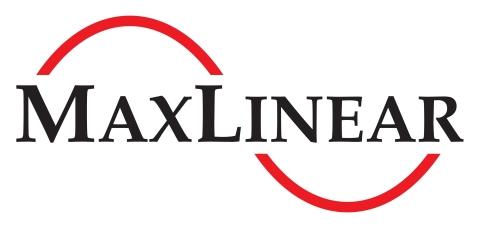TipRanks
3 “Strong Buy” Dividend Stocks Yielding Around 7%
These past 12 months have seen the S&P 500 return its best performance ever – an 80% gain as of the end of March. But are the good times wrapping up? Some historical data would suggest that the bulls will keep running. Since 1950, the market has seen 9 sustained, year-long runs with a rolling return of 30% or better on the S&P 500. These periods have seen an average one-year gain of 40% (the median has been 34%) – and none of these bull markets has ever ended in its second year. But investors should not expect the same sky-high returns in the coming 12 months as they have just seen in the last, according to Callie Cox, a senior investment strategist at Ally Invest. “[I]t’s typical for the bull market to lose a little bit of steam going into year two… Expectations start rising and makes it harder for the market to… beat everybody’s expectations. And that leaves a greater chance for disappointment. And to be clear, again, we’re not calling for doom and gloom. We just think the market is due for a breather up in the next quarter or two,” Cox opined. For investors focused on returns, the prospect of a lower sustained gain in share appreciation will naturally prompt a look at dividend stocks. Reliable, high-yield dividend payers offer a second income stream, to complement the share appreciation and ensure a solid return for investors. With this in mind, we used the TipRanks’ database to pinpoint three stocks that meet a profile: a Strong Buy rating from Wall Street’s analysts and a dividend yield around 7%. Trinity Capital (TRIN) We’ll start with Trinity Capital, a venture debt company that makes capital available to start-ups. Trinity’s investment portfolio totals $494 million, spread over 96 companies. The company entered the public markets earlier this year, closing its IPO early in February. The opening saw 8.48 million shares become available for trading, and raised over $105 million after expenses. In its 4Q20 report – the company’s first quarterly report as a public entity, covering the last quarter as a private firm – Trinity showed net investment income of $5.3 million, with a per-share income of 29 cents. This was more than enough to fund the dividend, paid in December at 27 cents per share. Since then, Trinity has declared its 1Q21 dividend, raising the payment by a penny to 28 cents per common share. Trinity has a announced a policy of paying between 90% and 100% of taxable quarterly income in the dividend. At the current rate, the payment annualizes to $1.12 per share, and gives a yield of 7.6%. This is significantly higher than the average yield of 1.78% found among peers in the financial sector. In his note on the stock, Compass Point analyst Casey Alexander states his belief that Trinity has a clear path toward profitable returns. “TRIN operates within the attractive, growing venture debt ecosystem. As such we expect strong net portfolio growth followed by improved NII and increasing dividend distributions, with potential upside from equity/warrant investments,” Alexander noted. To this end, Alexander rates TRIN a Buy, and his $16.75 price target implies an upside of ~14% for the next 12 months. (To watch Alexander’s track record, click here) This newly public stock has already picked up 5 analyst reviews – and those break down to 4 Buys and 1 Hold, for a Strong Buy consensus rating. Trinity shares are selling for $14.74; their $16.46 average price target suggests the stock has ~12% upside potential. (See TRIN stock analysis on TipRanks) Energy Transfer LP (ET) With our second stock, Energy Transfer, we move into the energy midstream universe. Midstream is the necessary sector connecting hydrocarbon exploration and production with the end markets; midstreamers control the transport networks that move oil and gas products. ET has a network of assets in 38 states, which link three major oil and gas regions: North Dakota, Appalachia, and Texas-Oklahoma-Louisiana. The company’s assets include pipelines, terminals, and storage facilities for both crude oil and natural gas products. The big news for Energy Transfer, in recent weeks, comes from two sources. First, on April 9, reports came out that that the US Army Corps of Engineers is not likely to recommend shutting down the Dakota Access Pipeline (DAPL). This project, when complete, will move oil from Alberta’s oil sands region across the US to the Gulf Coast; the Biden Administration wants to shut it down for environmental reasons, but the industry is fighting to keep it. And second, two largest shareholders of Enable Midstream have approved a proposed merger, by which ET will acquire Enable. The merger is projected to be worth $7 billion. Earlier this year, Energy Transfer reported 4Q20 EPS of 19 cents per share, on income of $509 million. While down year-over-year from the 38 cent EPS reported in 4Q19, the recent result was a strong turnaround from the 29-cent net loss reported in Q3. The company’s income is supporting the current dividend of 15.25 cents per common share. This annualizes to 61 cents, and give a yield of 7.7%. The company has paid out a dividend every quarter since Q2 of 2006. Covering this stock for Credit Suisse, analyst Spiro Dounis writes: “We updated our model to reflect a mid-2021 completion of the Enable Midstream acquisition. We view the deal as accretive and see additional potential upside resulting from operational/commercial synergies. ET highlighted potential synergies around both ENBL’s natural gas and NGL assets, noting that gas synergies could be realized fairly quickly while NGL opportunities are more long-term as legacy contracts roll. Upwards of ~$100mm of NGL uplift over the next several years doesn’t appear unreasonable, in our view.” Dounis also notes that the main risk to the company arises from DAPL, which may still be shut down by the Biden Administration. Even so, he rates the stock an Outperform (i.e. Buy), with an $11 price target indicating a 39% one-year upside. (To watch Dounis’s track record, click here) Wall Street’s analysts can be a contentious lot – but when they agree on a stock, it’s a positive sign for investors to take note. That’s the case here, as all of the recent reviews on ET are Buys, making the consensus rating a unanimous Strong Buy. The analysts have given an average price target of $11.60, indicating ~47% upside from the current share price of $7.94. (See ET stock analysis on TipRanks) Oaktree Specialty Lending (OCSL) Last but not least is Oaktree Specialty Lending. This company is one of many specialty finance providers, making loans and credit available in the mid-market segment, to smaller firms that would otherwise have difficulty accessing capital. Last month, Oaktree Specialty Lending completed a merger with Oaktree Strategic Income Corporation (OCSI). The combined company, using OCSL’s name, has more than $2.2 billion in assets. Oaktree’s investment portfolio totals more than $1.7 billion, primarily in first and second liens, which make up 85% of the company’s investment allocations. Oaktree finished 2020 with its fiscal first quarter, ending December 31. In that quarter, the company increased its dividend payment by 9%, to 12 cents per share, or 48 cents per share annualized. At this rate, the dividend yields 7.25% — and marks the third quarter in a row of a dividend increase. Oaktree has kept up reliable dividend payments for more than three years. Among the bulls is Kyle Joseph, a 5-star analyst with Jefferies, who puts a Buy rating and an $8 price target on this stock. His target implies room for 20% upside potential in the next 12 months. (To watch Joseph’s track record, click here) “OCSL’s conservative strategy in recent years has ultimately paid off, as the BDC is deploying dry powder into higher-yielding investments. Credit performance remained solid through the MRQ, while fundamentals are encouraging… We believe the BDC has sufficient liquidity to support near-term opportunities and believe the company is positioned to take advantage of the recent economic volatility, which was particularly highlighted by the recent 9% increase in the quarterly distribution… In the longer term, we believe OCSL represents an attractive investment,” Joseph wrote. Overall, OCSL has received 3 recent Buy reviews, making the analyst consensus rating a Strong Buy. The stock is currently trading at $6.66 and its average price target of $7.33 indicates ~10% upside from that level. (See OCSL stock analysis on TipRanks) To find good ideas for dividend stocks trading at attractive valuations, visit TipRanks’ Best Stocks to Buy, a newly launched tool that unites all of TipRanks’ equity insights. Disclaimer: The opinions expressed in this article are solely those of the featured analysts. The content is intended to be used for informational purposes only. It is very important to do your own analysis before making any investment.


